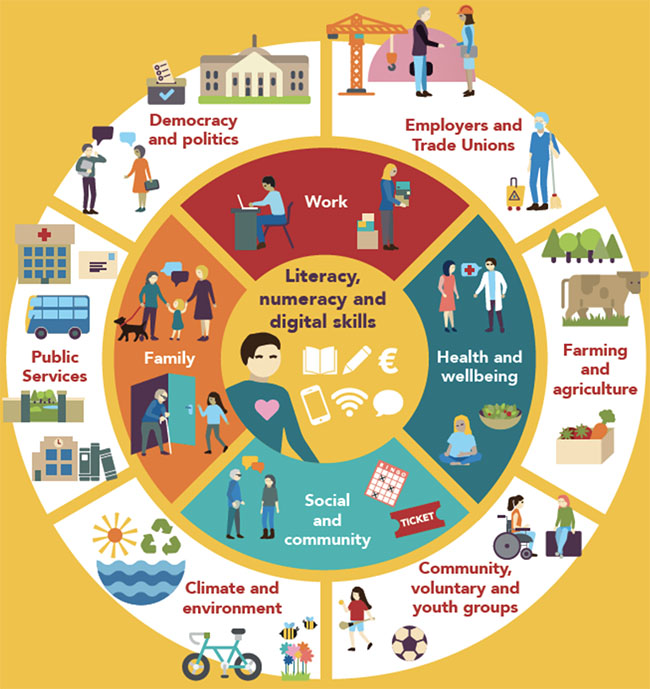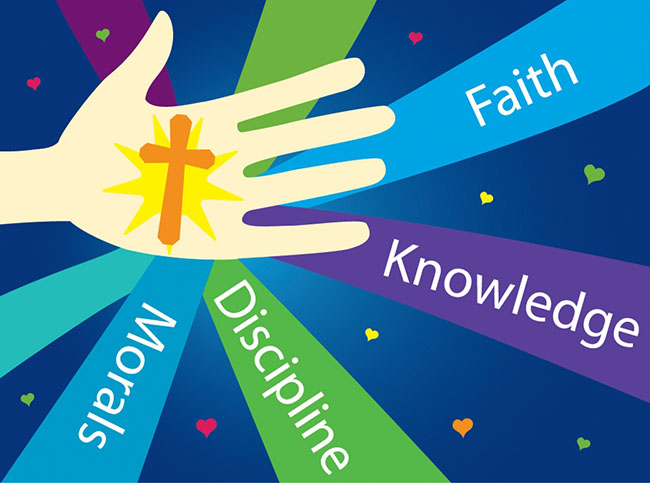

The Contribution of Catholic Church to improve standard of life
By Philip Mudartha
Bellevision Media Network
01 Apr2025: My earlier article dealt with the growing income disparities between Hindi belt of Northern Indian states and the Southern states. The Southern states are far richer than their poor cousins in Bihar, Madhya Pradesh, Rajasthan, UP, Jharkhand and Chhattisgarh.
Literacy is the most significant factor which contributed to the stated higher earning capacity.
The Impact of Education:

With the spread of education as education is ‘perceived as the most important tool for both accumulation of social assets and formation and accumulation of social capital’. This was proved by research across disciplines, over time. This is why educational development occupies a central position in social development in any society. A society’s progress is dependent mainly on its capability in the acquisition and accumulation of social assets. ‘The effect of social assets on societal change would depend upon the quality of accumulated social assets. One may think of education (facilities, levels, quality, and equality across sections), health, etc as social assets and the advances made in these sectors result in the accumulation of social assets. Such accumulation is expected to put society on the path of progress and since the accumulation would not be reversed (in the natural course) itself cannot be reversed.
Education is not merely narrow or limited to classroom experience but, a holistic and experimental learning aimed at social transformation. The collective and cooperative effort of social institutions, state, voluntary sectors and most importantly, people themselves can bring about community effectiveness. The historical contribution and breakthrough of the achievement of the Church in the field of education lies in the fact that it broke the monopoly of a single privileged caste and decentralized and democratized education. This made it possible for Dalits and Tribals not only to benefit by it but to have social mobility in life. The Dalits, backward classes and the Tribals were empowered by Catholic education.
Catholic Education:

Scholarly research has also revealed that people of the Southern states have high regard for Catholic schools. It is the desire of every parent in these states to get his or her child educated in Catholic schools. One can see the rush of parents to these schools to anyhow get their child admitted. Even Businessmen, who runs schools in most major cities in India, prefer their children to study in these schools.
The Catholic schools are imbibed by a strong Catholic ideology of the universal and national church doctrines. These schools aim to promote a holistic development of the students. Even non-Catholic teachers teaching in Catholic schools have been influenced by this mind set of the Church. The Catholic Church does not aim to forcibly convert people to Catholicism. Thousands of non- Christian students, who have studied in these schools for more than 10 years, have no knowledge of difference between Catholic Churches and other denominations. According to surveys, respondents have remarked ‘Catholic Schools give better education than the others. The formations they provide in these schools are more holistic. They have better discipline, instilled good moral values, and shaped the personalities of the students in a humane, responsible, honest, upright and God-fearing manner. They are taught to respect the diversity existing in our society, learn to live in peace with each other and appreciate the beauty of each other’s culture, tradition and religion. They are not only given academic instruction but are also taught skills which will in future, enable them to make a better life for themselves. There is immense change in the lifestyles of the students with the coming of Christianity and more specifically with education spread across the Southern states.
Example from Belle:
.jpg)
The St. Lawrence education institutions have contributed immensely towards the advancement of the Belle population belonging to any religion, caste and class. These institutions were set up by the Catholic community with their own financial and human resources. The Catholic parishes of Moodu-belle, Pambur and Kuntal Nagar, Kanajar have participated in the efforts headed by the Church clergy to run these schools with self-less dedication.
I feel proud to say that I am an alumnus of the above mentioned institution.
Further, The Jesuits in particular are a by-name for service in the education sector. The St. Aloysius College in Mangalore, where I studied for two years in good example to showcase their contribution to society.
Example of Manipur as a case study:

It cannot out rightly be stated that spreading of education had no effect on the Meitei as well as in the present-day Manipur, as there have been modification in the various rituals and ceremonies. Religion as mentioned in the earlier pages had always played a pivotal part in influencing the adoption of the new cultural values, the adieu to their old animistic beliefs, their old habit of sipping ‘zu’ together, and the importance/relevance of ‘zu’ (rice beer) in every celebration or occasion. The influence of religion is not only confined to amongst the Tribal. Religion can be universally accepted as a dominant force in determining the changes that takes place in any human life at any given place. Hence, with the coming of Catholicism, there were changes everywhere.
The similarities between the belief in Catholicism and also the belief in the old tribal animistic religion were quite many. For example, the tribal belie the tribal belief in the existence of God, a Supreme Creator could be compared to the God, the Supreme Being in the Bible. Though not exactly similar to the belief as per Catholicism, the Tribal also believed in a world after death and in certain ways, this is comparable to Purgatory. The Catholics also believed in Praying for their deceased family members and friends especially on All Soul’s Day (2nd November), the Catholics would go visit burial places of those who, left this world already. The same way, the Tribal also practised sacrificing, fasting, abstinence, offering prayers, etc for their loved ones, who had left their worldly lives. Now, with all these similarities with their old beliefs, the Tribal as compared to the Meitei endorsed Catholicism without much hesitation. However, it is important to mention here that Catholicism did not vouch for a complete breakdown of the old traditional belief and culture but only to do away with or modify certain aspects of the old culture.
(to be continued)